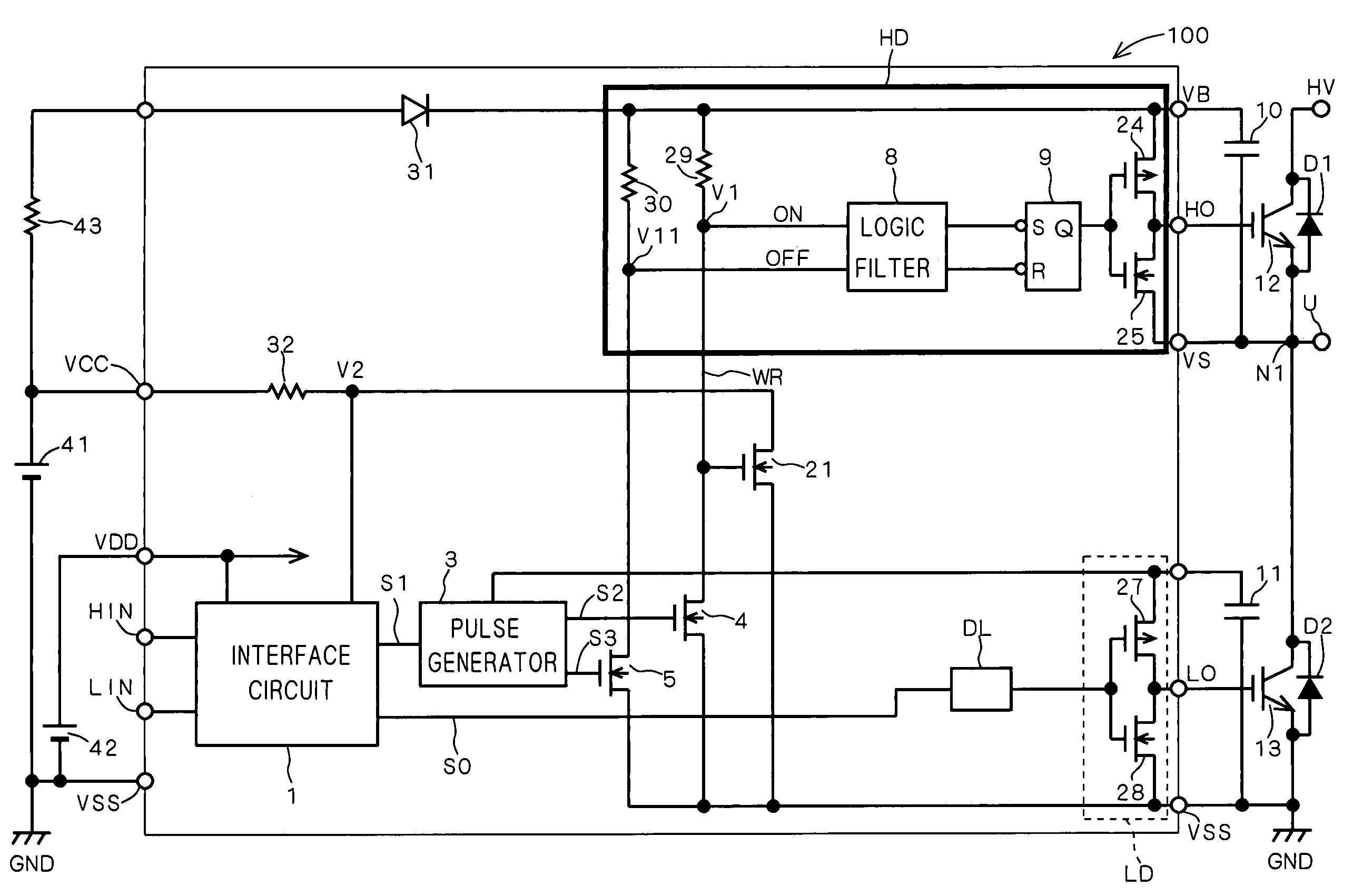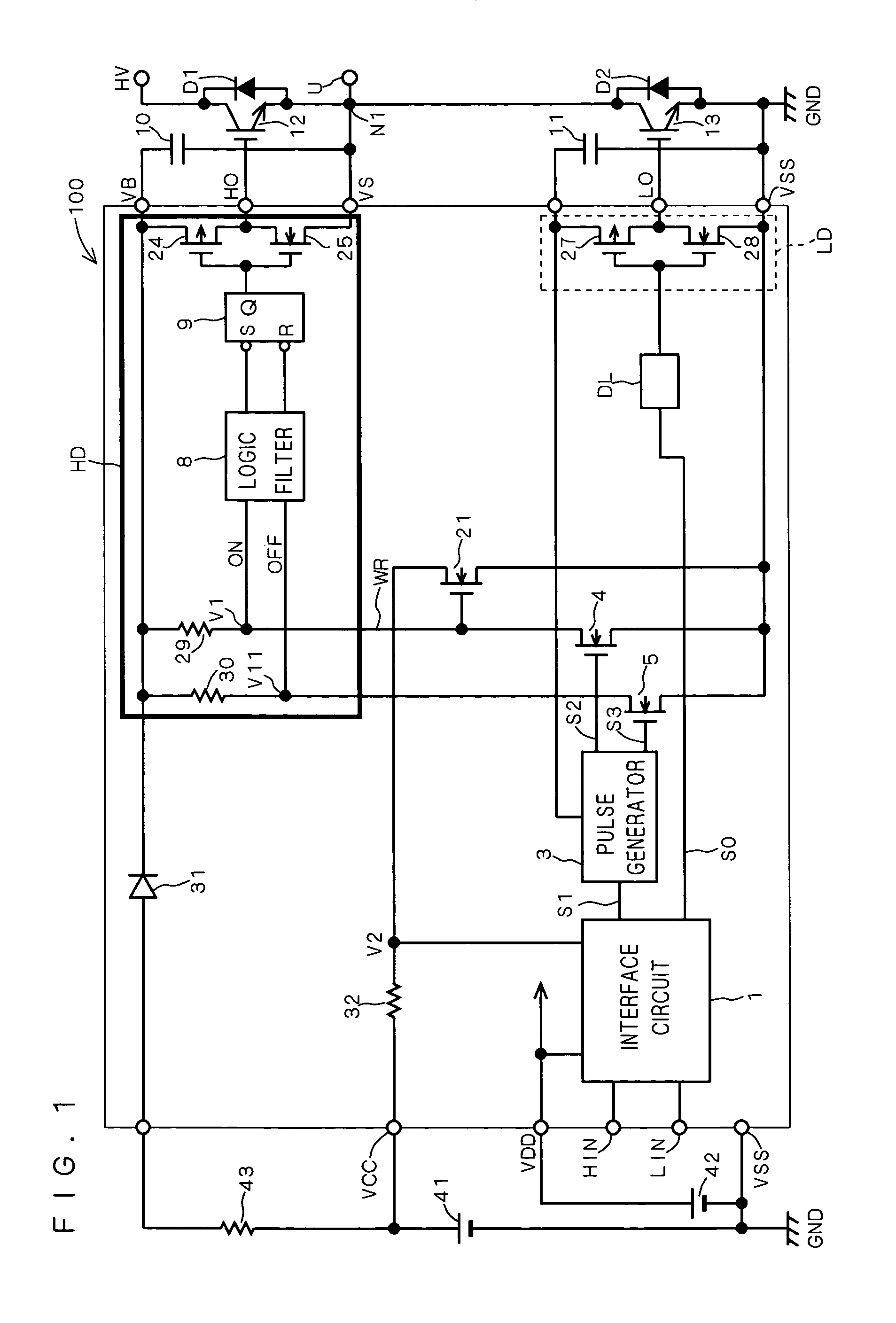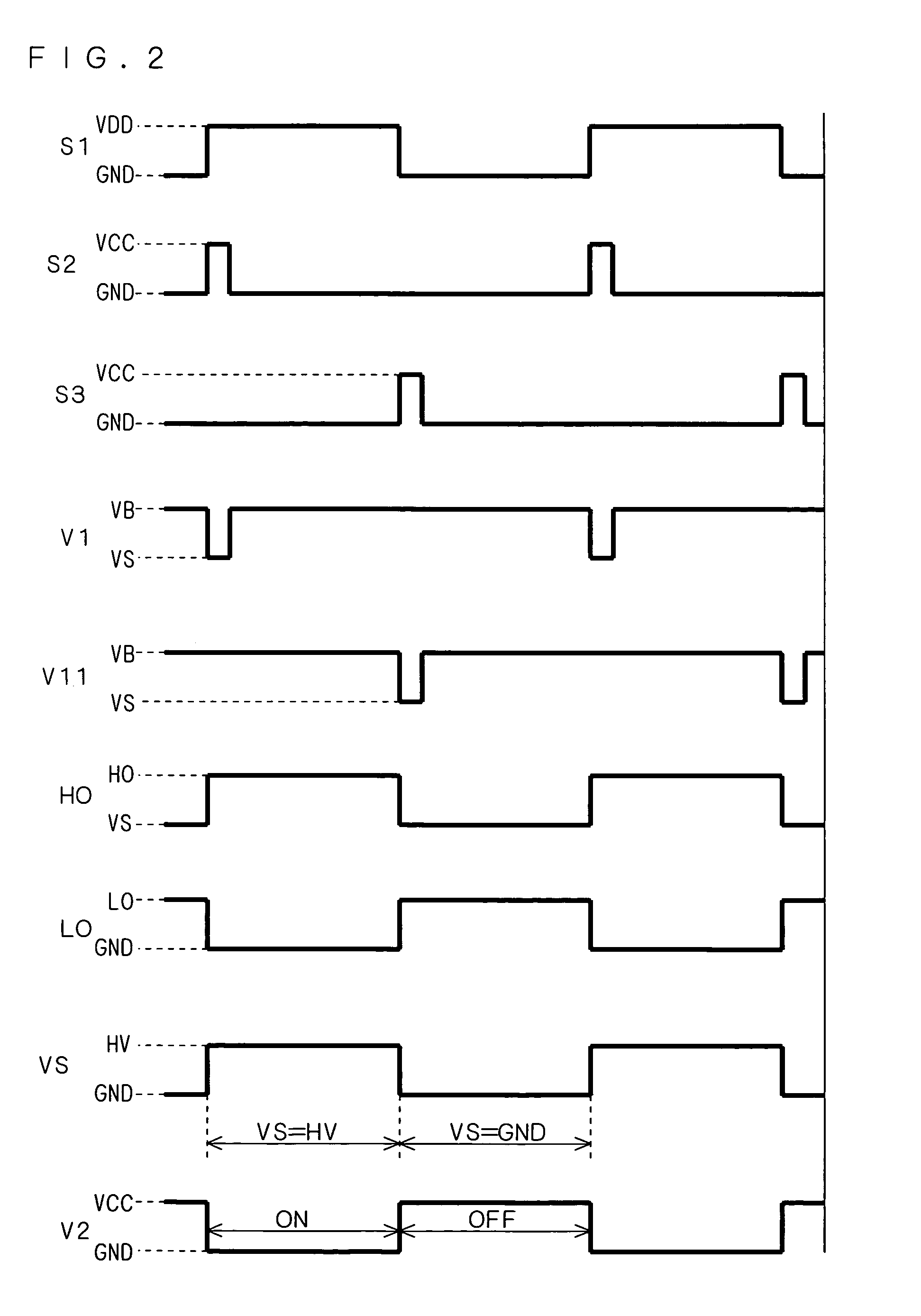Semiconductor device with a voltage detecting device to prevent shoot-through phenomenon in first and second complementary switching devices
a technology of voltage detection and semiconductor devices, applied in the direction of logic circuit coupling/interface arrangements, pulse techniques, animal watering devices, etc., can solve the problems of large current flowing into the igbt, short circuit of high side igbt, and failure of high side gate drivers to continue outputting, so as to prevent damage to the semiconductor device and high voltage
- Summary
- Abstract
- Description
- Claims
- Application Information
AI Technical Summary
Benefits of technology
Problems solved by technology
Method used
Image
Examples
first preferred embodiment
1. Circuit Configuration
[0049]FIG. 1 illustrates the configuration of a high voltage integrated circuit (HVIC) 100 according to a first preferred embodiment of the present invention.
[0050]In FIG. 1, power devices 12 and 13 such as IGBTs (Integrated Gate Bipolar Transistors) are totem-pole-connected between a high side (HV) power line and a low (ground potential GND) side power line, to form a half-bridge power device. Free wheel diodes D1 and D2 are connected inversely in parallel to the power devices 12 and 13, respectively. Then, a load (an inductive load such as a motor) is connected to a node N1 between the power devices 12 and 13.
[0051]In FIG. 1, the power device 12 switches between a potential at the node N1 used as a reference potential and the potential (HV) at a high side power line, and is called a high side power device.
[0052]The power device 13 switches between the ground potential used as a reference potential and the potential at the node N1, and is called a low side p...
first modification
4. First Modification
[0119]Although the use of an NMOS transistor as a voltage detector has been described above by way of example, a PMOS transistor may be used instead. In this case, connecting the resistor 32 shown in FIG. 1 to the GND terminal, the drain of the PMOS transistor to the resistor 32, and the source to the VCC terminal, and performing a NAND operation of the drain potential V2 and HIN signal, the control signal S1 can be made an OFF signal at the timing when ground-fault occurs at the node N1.
[0120]Further, the use of an enhancement type MOS transistor as a voltage detector has been described by way of example, a depression type MOS transistor may be used instead.
[0121]When the potential VS becomes negative, an enhancement MOS transistor cannot detect it, however, a depression type MOS transistor, for example, is brought into an off state when the potential VS becomes negative, and thus can detect a negative potential VS.
second modification
5. Second Modification
[0122]Although the NMOS transistor 21 performing on / off control based on the drain potential at the HNMOS transistor 4 as shown in FIG. 1 has been described above, an NMOS transistor 22 performing on / off control based on the drain potential at the HNMOS transistor 5 may additionally be incorporated as in an HVIC 100A shown in FIG. 8.
[0123]In this case, the logic circuit voltage VCC is applied to the drain electrode of the NMOS transistor 22 through a resistor 33, and the ground potential is applied to the source electrode of the NMOS transistor 22. The potential VS is monitored indirectly also by monitoring a drain potential V22 at the NMOS transistor 22 by the interface circuit 1. Components shown in FIG. 8 similar to those in the HVIC 100 in FIG. 1 are indicated by the same reference numerals, repeated explanation of which is thus omitted here.
[0124]As described, providing a plurality of voltage detectors for monitoring the potential VS achieves redundancy, w...
PUM
 Login to View More
Login to View More Abstract
Description
Claims
Application Information
 Login to View More
Login to View More - R&D
- Intellectual Property
- Life Sciences
- Materials
- Tech Scout
- Unparalleled Data Quality
- Higher Quality Content
- 60% Fewer Hallucinations
Browse by: Latest US Patents, China's latest patents, Technical Efficacy Thesaurus, Application Domain, Technology Topic, Popular Technical Reports.
© 2025 PatSnap. All rights reserved.Legal|Privacy policy|Modern Slavery Act Transparency Statement|Sitemap|About US| Contact US: help@patsnap.com



